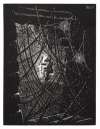Wifredo
Lam
Wifredo Lam is celebrated for his dynamic synthesis of Surrealism, Afro-Cuban symbolism, and modernist abstraction. If you’re looking for original Wifredo Lam prints and editions for sale or would like to sell, request a complimentary valuation and browse our network’s most in-demand works.
Notable series
Wifredo Lam art for sale
Discover Wifredo Lam prints for sale, exclusively available through our private network of collectors. Explore signed and unsigned screenprints, lithographs, digital prints, and rare editioned proof prints by era-defining blue chip artists.
Sell Your Art
with Us
with Us
Join Our Network of Collectors. Buy, Sell and Track Demand
Biography
Born in 1902 in Sagua La Grande, Cuba, Wifredo Lam was exposed to a diverse cultural heritage from an early age, with a Chinese father and an Afro-Cuban mother. After studying in Havana and later at the Academy of San Fernando in Madrid, Lam found inspiration in Spanish modernist movements and the works of Francisco Goya. His exposure to European avant-garde styles deepened when he moved to Paris in 1938, where he became closely associated with artists like Pablo Picasso and André Breton.
During World War II, Lam returned to Cuba, which marked a pivotal turning point in his career. His paintings began to reflect his renewed engagement with Afro-Cuban spirituality and iconography, infused with the modernist techniques he absorbed in Europe. This blend of influences led to his distinctive style, which incorporated Afro-Cuban mythology, abstract forms, and vibrant colour.
Throughout the 1940s and 1950s, Lam's work underwent a metamorphosis as he integrated the surreal and the symbolic. His work, The Jungle, is a tour de force of this period, capturing his concerns with identity, colonialism, and spirituality. His work captured the imagination of the international art world, leading to significant exhibitions across the globe, including major retrospectives at the Musée National d’Art Moderne in Paris and the Museum of Modern Art in New York.
Lam's career was punctuated by numerous critical exhibitions across Europe and the Americas, establishing his reputation as a pioneering transnational artist. His work defied simple categorisation, spanning Surrealism, Cubism, and Abstraction, all the while maintaining a dialogue with the practices of his homeland.

































